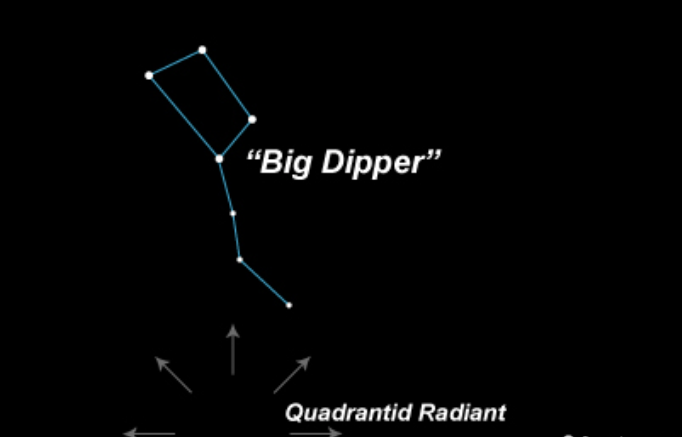Quadrantids Quick Facts
Meteor Shower Dates: December 28 – January 12
Peak Dates: ~January 1st
Peak Meteor Shower Numbers: 60 to as many as 200 meteors per hour under perfect conditions.
Best Viewing Times: Night and PreDarn Hours
Originating Constellation: Bootes
Summary
The Quadrantids are a January meteor shower with a maximum meteor shower rate as high as that of two other reliably rich meteor showers, the Perseids in August and the Geminids in December. However, Quadrantid meteors are not seen as often as meteors in these other two showers, because the peak intensity is exceedingly sharp, sometimes lasting only hours. Additionally, the meteors are quite faint with a mean magnitude of between 3 to 6.
The meteor rates exceed one-half of their highest value for only about an eight hour period, which is much shorter when compared to the two days period for the August Perseids.
Running annually from December 28th to January 12th, the Quadrantids Meteor Shower peaks on or about January 3rd and 4th. There is the potential to see up to 40 meteors per hour at peak, these meteors are thought to be produced by dust grains left behind by an extinct comet known as 2003 EH1. Meteors will radiate from the constellation Bootes, but can appear anywhere in the sky.
The name of the quadratids comes from Quadrans Muralis, which is a former constellation created in 1795, but is now part of Boötes. In 1839, astronomers in Europe and the United States independently discovered and suggestion that the Quadrantids are an annual shower.
In 1922, the International Astronomical Union revised the list of modern constellations to 88, which did not include Quadrans Muralis. Neverthless, this meteor shower still retains the name Quadrantids, for the original and now-obsolete constellation.

Best view i have ever seen !